How to Use London Overground, Getting around London Guide
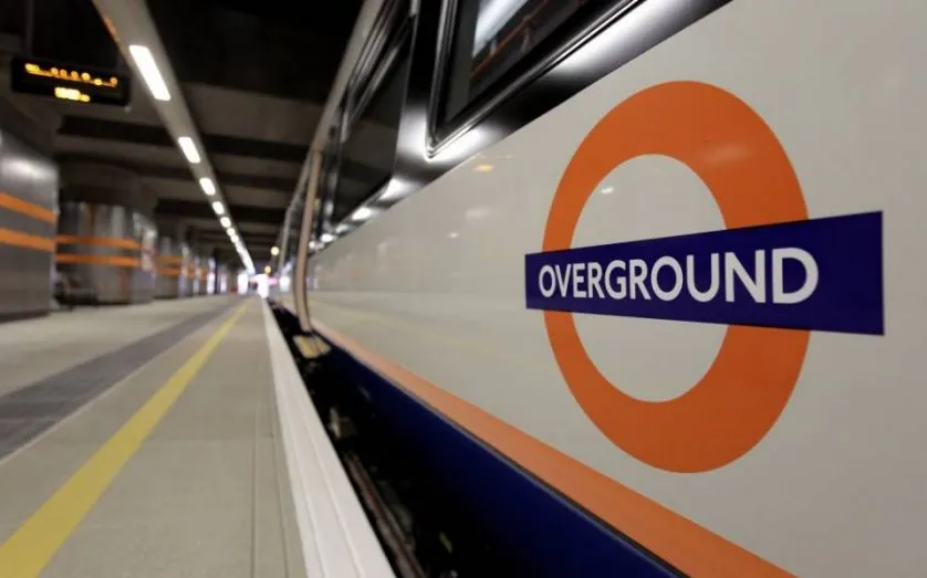
The London Overground is a key suburban rail service that enhances connectivity between Greater London neighborhoods and the city center. It operates over 112 stations across six distinct routes, offering a viable alternative to the London Underground for commuters who live in outer boroughs. Since its establishment in 2007, the Overground has undergone multiple expansions, enabling more direct travel across the city without necessarily having to travel through central London, thus reducing congestion on the Tube and making commuting simpler. For those looking to explore London further, consider checking out our guide on How to Use London Buses, Getting Around London Guide for additional insights on navigating the city’s public transport.
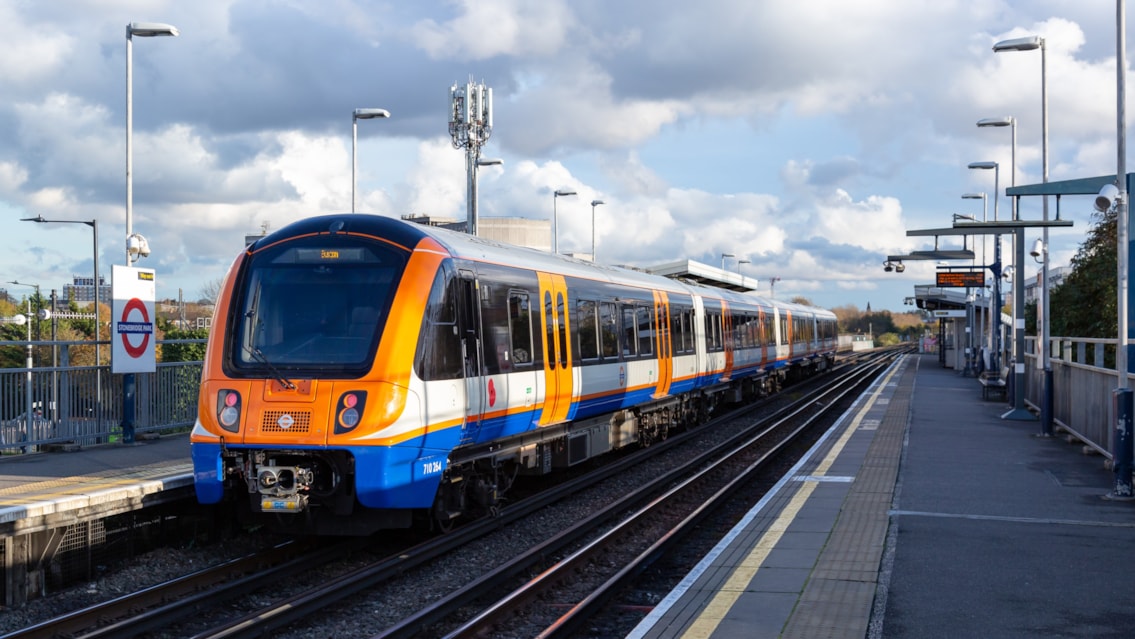
Purpose and Role of the Overground in London Transport
The Overground supports the city’s growing need for expanded public transportation by linking suburban areas with major transit hubs, bridging gaps that were previously underserved by the Underground and mainline services. It operates on the same fare structure as the rest of the TfL network, ensuring seamless connectivity across different modes of transit, including the Tube, buses, and national rail services. The Overground’s role extends beyond merely being a commuter service—it contributes to the city’s economic development by connecting people to job opportunities across the metropolitan area.
Historical Background and Expansion
Originally part of the North London Line, the Overground system has gradually expanded to include additional lines such as the East London Line, which opened in 2010 as part of a significant extension. The network has since incorporated the South, West, and North East London lines, as well as the Gospel Oak to Barking Line. Each extension has responded to the need for better connectivity and increased passenger capacity, turning the Overground into a comprehensive network that complements both the Underground and the city’s mainline rail services.
Overview of Key Routes and Lines
Each Overground route serves specific geographic areas, offering connections to mainline railways, Tube stations, and bus services.
East London Line
Serving as a crucial north-south link, the East London Line connects Highbury & Islington in North London to Crystal Palace, Clapham Junction, and West Croydon in South London. This line passes through major areas such as Shoreditch High Street and Whitechapel, both known for their business and cultural hubs. Due to its strategic route, the East London Line is often a preferred option for commuters who live in the east and south of the city, providing efficient connections to areas typically underserved by the Tube.
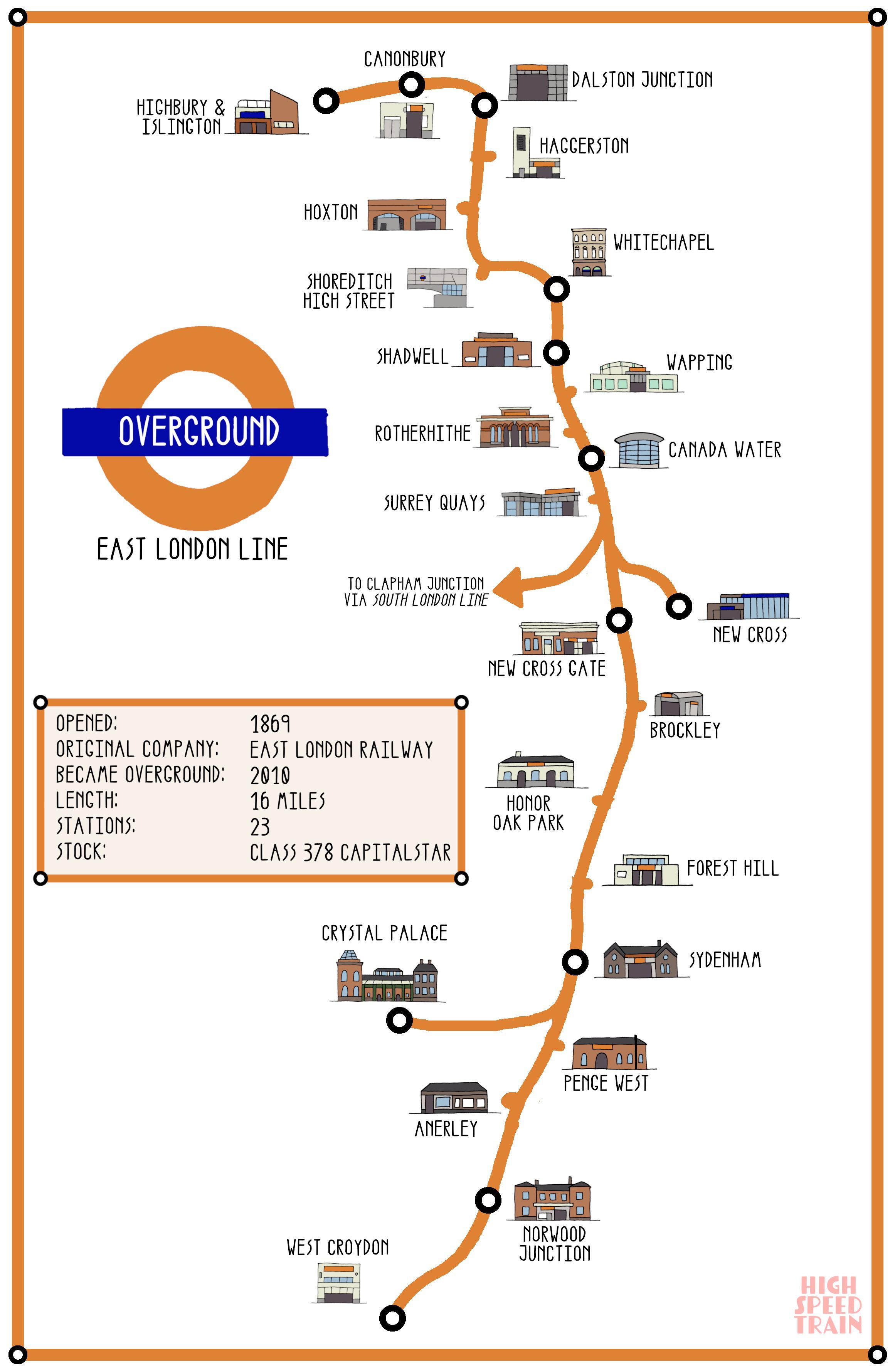
North London Line
This line connects Richmond in the southwest to Stratford in the east, passing through key areas such as Willesden Junction, Hackney, and Hampstead Heath. It intersects with multiple Underground lines, including the Jubilee and Victoria lines, making it a valuable route for those commuting to business districts like Canary Wharf or the West End. The North London Line’s service between Clapham Junction and Stratford offers additional north-south connectivity, ideal for those commuting across diverse parts of the city without needing to transfer between services.

Watford DC Line
The Watford DC Line connects Watford Junction with London Euston, covering areas in northwest London and allowing for transfers to the Bakerloo Line at key interchanges like Harrow & Wealdstone. This line is particularly popular among commuters traveling from outer London areas to central locations, as it provides direct and efficient connections without needing to transfer through the busiest parts of the city.
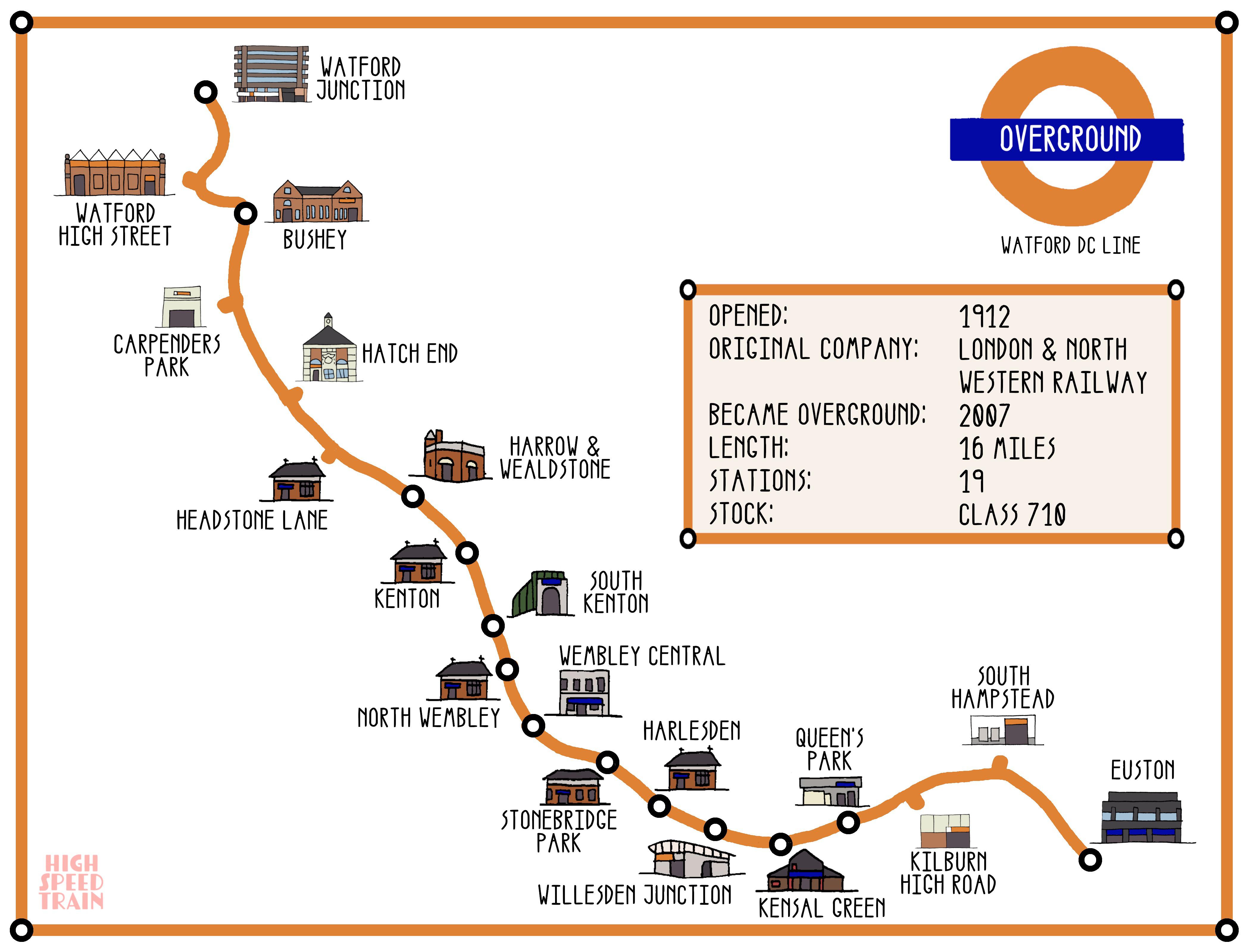
Gospel Oak to Barking Line (GOBLIN)
The GOBLIN line is an essential east-west route across North London, linking Gospel Oak to Barking and serving areas like Walthamstow, Leytonstone, and Blackhorse Road. Known for its scenic route along parks and the River Lea, the GOBLIN line is unique as it bypasses central London entirely, making it a convenient option for those commuting across North London. Recent electrification has increased train frequency and reduced travel times, improving reliability and efficiency on this route.
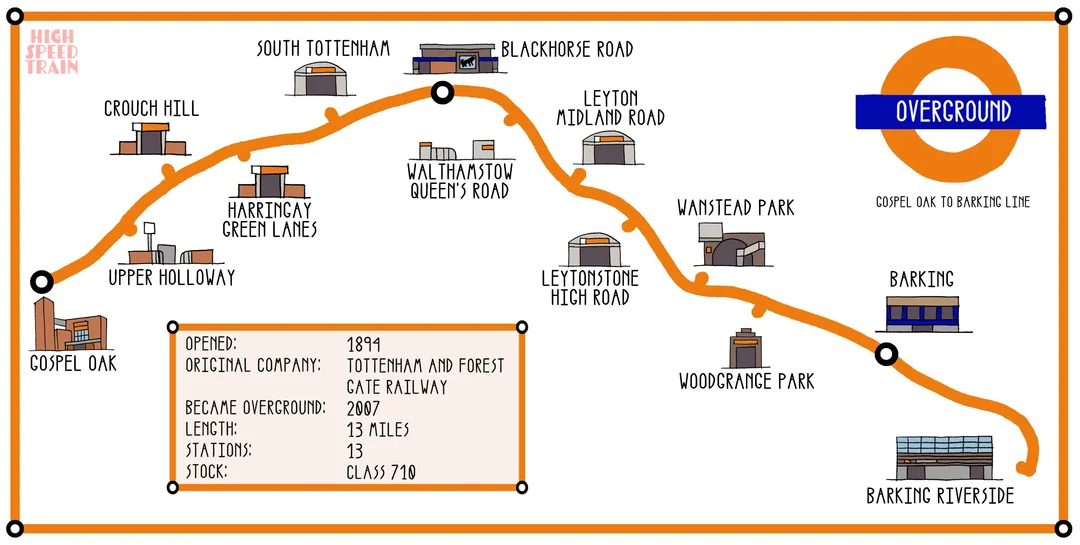
Additional Lines
In addition to the major routes, the Overground includes shorter lines such as the Romford to Upminster Line and the Lea Valley Lines, which serve niche routes within East London. These lines provide crucial connections for residents living in suburban areas and offer an alternative to bus services, helping reduce overall travel times for local commutes.
Fares and Ticketing Options
The Overground follows TfL’s standard fare structure, allowing the use of Oyster cards, contactless bank cards, and Travelcards for a flexible and economical travel experience.
Overview of Payment Methods
Payment on the Overground is convenient and compatible with various options, including Oyster cards, which can be preloaded with credit for regular use. Contactless bank cards offer the same fare benefits, including capping, which ensures you don’t pay more than the cost of a day or weekly Travelcard. Additionally, mobile payment options such as Apple Pay and Google Pay are accepted, providing extra convenience for those who prefer digital payment methods.

To maximize your savings when using the Overground, consider linking your contactless payment or mobile app to your travel history through platforms like Transport for London’s (TfL) online account. This allows you to track fare capping, monitor your journeys, and receive refunds for any overcharges. Additionally, setting up auto top-up on your Oyster card ensures you never run out of credit, especially during peak travel times, helping you avoid unexpected delays.
Peak vs. Off-Peak Fare Structures
Fare prices vary based on peak and off-peak times. Peak fares apply Monday to Friday during morning and evening rush hours, while off-peak fares are available at other times, offering a more economical option for those who have flexible schedules. Choosing to travel during off-peak hours can significantly reduce commuting costs, particularly for those who regularly travel across multiple fare zones.
Fare Zones and Capping Policies
The Overground spans nine fare zones, and fares increase as you travel through more zones. For example, trips within a single zone are less expensive than those crossing multiple zones. Daily and weekly fare capping ensures that regular users don’t pay more than a set amount, which provides substantial savings for those making frequent trips. Capping applies across all TfL services, so Overground users who also use the Tube, buses, or trams benefit from combined capping limits.
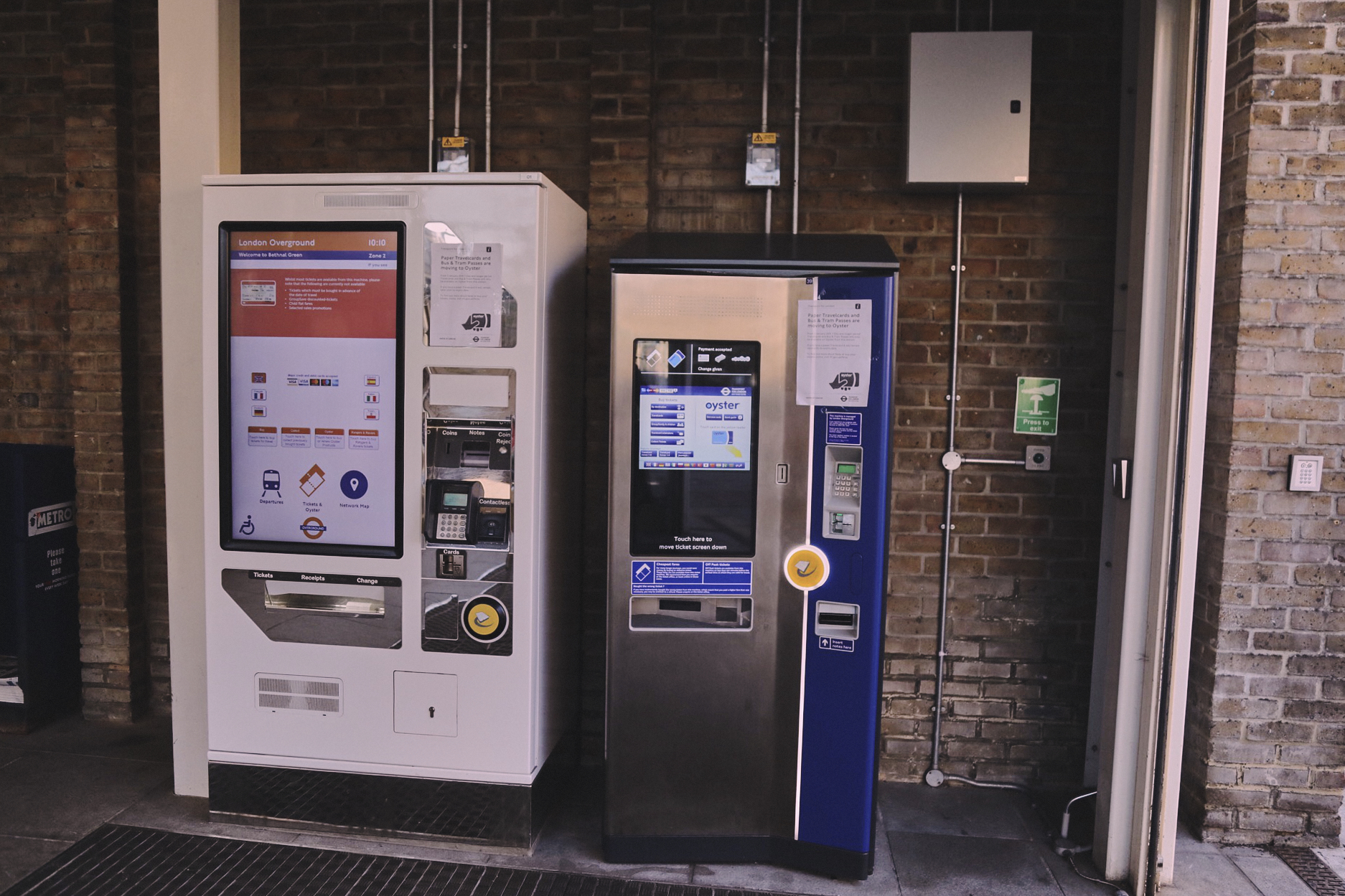
London Overground Timetables and Frequency
With trains running from early morning until late at night, the Overground offers frequent and reliable services, catering to both commuters and casual travelers.
Typical Service Hours
Most Overground lines operate from 5 a.m. until midnight, making them accessible for early-bird commuters and late-night travelers alike. Service hours may vary slightly depending on the line, but the majority follow a consistent schedule, ensuring regular service throughout the day.
Frequency of Services
During peak hours, trains typically run every 5-10 minutes, particularly on busy routes like the North and East London Lines. Off-peak hours see slightly reduced frequency, with trains generally every 10-15 minutes. Despite these reductions, services remain frequent enough to minimize waiting times and ensure smooth travel for passengers.
Night Services and Weekend Variations
On weekends, the Overground often extends its hours, particularly on popular routes that support nightlife and cultural activities. While some lines run later, others may experience planned maintenance work, especially on Sundays. Checking TfL’s real-time updates is recommended for the latest weekend and night service information.
Commuter Tools and Resources
For Overground commuters, numerous apps and platforms provide real-time updates, journey planning, and ticketing information.
Recommended Apps for Real-Time Overground Updates
- Citymapper: This app is popular among Londoners for its accurate real-time updates, alternative routes during service disruptions, and helpful journey planning features. Citymapper also provides live updates on Overground services and estimated arrival times, making it a valuable tool for daily commutes.
- TfL Go: As the official app from Transport for London, TfL Go offers comprehensive details on Overground services, including live service updates, departure boards, and station information. It’s also integrated with other TfL services, providing a one-stop resource for navigating the entire public transport network.
- Trainline: Trainline is ideal for those who also use mainline services, as it combines Overground and national rail journey planning with ticket purchasing options. The app also offers notifications about delays, which can be helpful for commuters using multiple rail services.
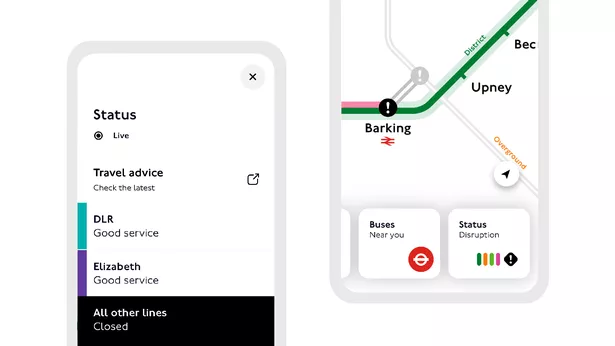
Online Platforms for Schedule Checking and Planning
TfL’s website and Google Maps are great resources for planning Overground journeys. Both platforms offer live service updates and alternative route suggestions, making it easier to adjust plans if disruptions occur. These tools are also beneficial for multi-modal journeys, providing integrated directions for combined Overground, Tube, and bus travel.
Accessibility Features and Safety Considerations
London Overground stations and trains are equipped with accessibility features to accommodate passengers with mobility needs and promote a safe travel environment.
Accessibility Facilities Available on Overground Services
Most Overground stations are step-free, allowing easy access for passengers with wheelchairs, strollers, or heavy luggage. Trains also feature designated spaces for wheelchair users, and priority seating is available for those with disabilities, elderly passengers, and parents with young children. In addition, tactile paving, visual displays, and audio announcements keep passengers informed throughout their journey.
Safety Tips for Overground Commuters
While the Overground is generally safe, it’s important to remain vigilant, especially during crowded peak hours. Keeping an eye on personal belongings and avoiding distractions like mobile phones can help reduce the risk of theft. CCTV monitoring is in place across the network, and emergency help points are available at most stations to provide immediate assistance if needed.
Recent Upgrades and Future Developments
TfL continues to enhance the Overground network with modernizations and expansions aimed at improving passenger capacity and service reliability.
Recent Modernization Projects
Upgrades to the Overground include the electrification of the Gospel Oak to Barking Line, which has helped increase frequency and reduce emissions. New trains with improved features such as air conditioning, wider doors, and increased seating capacity have alsohave been introduced on several lines. These improvements aim to enhance passenger comfort and make the Overground a more attractive option for commuters. Upgrades have included station refurbishments, accessibility enhancements, and added facilities, such as step-free access and better signage.
Expansion Plans and New Route Proposals
Future expansion plans for the Overground include potential extensions to underserved areas, which would further improve connectivity between Greater London boroughs and central hubs. Proposed routes and service extensions are part of TfL’s long-term vision to meet the increasing demand for suburban rail services, address congestion, and boost economic activity in new areas. Regular updates on these projects can be found on TfL’s website.
Efficiency Tips for London Residents
To make the most of your Overground travel, here are some tips on etiquette, time-saving strategies, and optimizing transfers for a smoother experience:
Overground Etiquette and Best Practices
Follow basic Overground etiquette, such as moving away from doors after boarding to allow others to enter, keeping your belongings close, and respecting priority seating areas. Avoid blocking aisles and doorways, especially during peak hours, and be mindful of noise levels to ensure a comfortable environment for everyone.
Time-Saving Strategies for Peak Commuting
If your schedule allows, try to avoid peak hours for a more comfortable journey. When you must travel during peak times, apps like Citymapper and TfL Go can help you track real-time service updates and identify less crowded trains. You can also consider alternative routes or use apps to check for potential delays on your regular path.
Optimizing Transfers between Overground and Other Lines
Planning transfers can help reduce overall travel time. Familiarize yourself with Overground stations that link with other TfL services, such as Whitechapel, Clapham Junction, and Highbury & Islington. Pre-planning transfers allows for quicker connections and ensures you have adequate time to make necessary changes between services.
Conclusion
The London Overground is an essential component of London’s transit system, offering reliable connections for residents traveling within the city and beyond. With efficient planning, access to the right tools, and knowledge of Overground routes, commuters can enjoy a convenient and cost-effective travel experience across Greater London. Whether you’re a daily commuter or an occasional traveler, the Overground provides a practical and accessible way to navigate London.


